One Joomler's World Conference 2014 Experience
I set out to the Joomla! World Conference seeking inspiration and to learn how to create better websites. Little did I know it would also turn into a great vacation with a visit to a Mayan archeological site, morning yoga sessions on the beach, enjoying varied dance performances, great food and perfect weather. Remember, there were four simultaneous presentation tracks running concurrently in English, and one in Spanish. What follows includes brief descriptions of what I took away from the sessions I chose.
Wednesday, November 5

My wife Susan and I, got up 6:30am and after breakfast took the A-Train NY Subway line to JFK Airport. Our Jet Blue flight left at 11:30am and we arrived in Cancun airport 3 hours and 15 minutes later where we got a cab to the Grand Oasis Cancun Hotel. After checking in, we walked around the hotel and its beautiful grounds. We ate excellent Spanish food at the Hotel's Seville Restaurant for dinner and listened to some musicians for evening entertainment.
Thursday, November 6
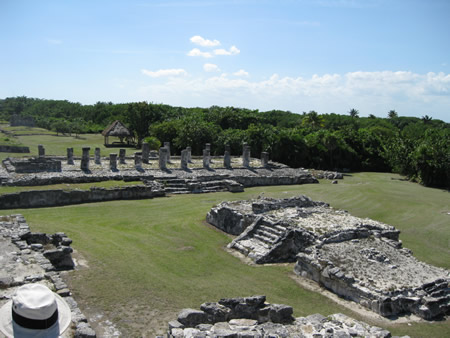
Thursday was the day before the conference sessions started, so my wife and I used it to play tourists together. We walked just two kilometers south of the hotel to visit the El Rey Mayan ruins archeological site and then took a bus back to the hotel for lunch. After lunch, we took a bus into town to learn our way around and to visit Mercado 28, a market of souvenirs, jewelry, and eating establishments. We stopped at a bank to exchange some dollars for pesos, and made a brief stop in the Walmart which looks pretty much like any Walmart in the U.S.
In the evening we saw acrobatic aerial dancers perform in the central pyramid of the hotel and walked around the beautiful grounds listening to different bands.
Friday, November 7
9:30 "Welcome to Joomla World Conference", by Sarah Watz
Friday morning I walked into the Arena for the Welcome and Keynote. As soon as I stepped into the large room and saw about 200 people and the huge stage with twin projector screens, theater lighting and props the way you see them on TED videos and large corporate conferences, I felt so happy to be there. Sarah Watz, Joomla President, gave the welcome speech. I think any company or organization would be proud to have her representing them.
10:00 "Joomla! 4: International Edition - A Parody", by Javier Gomez & Tito Alvarez
Javier and Tito gave a humorous presentation about Joomla and a very audience-engaging/participating mimed spelling out of J-O-O-M-L-A with arm gestures to set to the song "YMCA". It was a great way to get everyone in a celebratory mood.
Javier pointed out that the most popular languages in the world are:
- Mandarin: 850 million
- Spanish: 470 million
- English: 335 million
- Hindi: 260 million
He then presented some humorous examples of the same words that mean very different things in different languages.
10:30 "Meet the Joomla! Leadership Team"
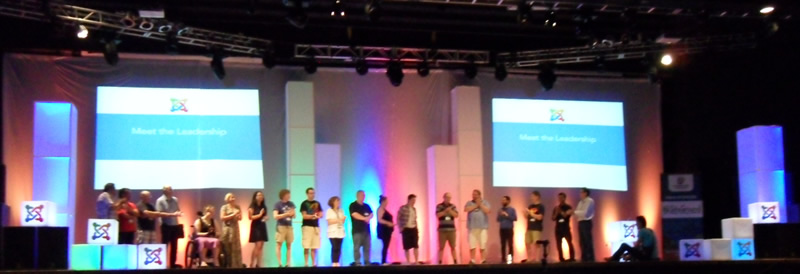
Then we met the Joomla! Leadership Team, some of the many people who work hard to keep Joomla moving forward.
There was some break time, and I got to talk with Sander Potjer who helps run user groups in the Netherlands, where they have a large Joomla community relative to their population size, and many user groups. Multiple user groups share a common website so it is less work, the traffic is concentrated, it is easier to market and let people know where to go to find Joomla community, and interestingly the groups plan and announce their topics for many months in advance.
Then the breakout sessions began. There were five sessions running concurrently in separate meeting rooms, each with rows of chairs facing front to the presenter with a large flat panel TV screen. But at least one of the sessions I attended had people seated around tables because we broke up into groups of three-or-so people to do hands-on assignments.
11:30 "10 Tips to Improve the Usability of Joomla", by Sander Potjer
This session started with a poll of attendees. When asked Yes or No, if we thought Joomla had an easy to use interface, a show of hands indicated a 50/50 split. Then Sander clarified that the question should really be two questions? When polled again with "Is the Joomla Interface easy to use for developers" everyone answered "Yes". When asked is the Joomla Interface was easy to use for clients. everyone answered "No".
The rest of Sander's presentation demonstrated 10 ways a developer could customize Joomla to make it simpler for clients to create and edit content. This mostly consisted of settings and overrides. I plan on downloading his presentation and resources and studying his techniques.
14:45 "Gaining More Control of Your Joomla Templates", by Jonathan Shroyer
This was an extensive demonstration of PHP and Template Overrides, the benefits of a serious coder's many hours of learning distilled. It was a great resource and very inspirational. I personally have been designing sites almost exclusively with Yootheme templates and not customizing them very much or certainly not in the advanced ways that were demonstrated. I asked Jonathan for the names of some Joomla template providers to use if I wanted to implement some of his customization techniques and he mentioned Joomlart and XTC.
I must download this presentation and follow this guy. His techniques are very powerful. He briefly flashed a cable vendor's website as an example of some template customization.
15:50 "Building Custom Applications with Fabrik", by Robbie Adair
Robbie demonstrated how Fabrik lets users create front and backend lists and forms to enter and maintain data in the Joomla database without a need to write PHP. For some applications it could be an alternative to K2 and SobiPro. I definitely want to give Fabrik a try.
Keynote: Joomla!Ignite, by Duke Speer
A nice change of pace for the weekend, 10 speakers each gave 5 minute presentations with prepared slides and video accompaniment. I took something away from nearly every presentation. The two that resonated with me the most where Chris Neilsen's presentation about children creating websites as naturally as other tech activities they participate in like Minecraft and Lego robotics. He wasn't the only presenter to mention enlightened educational efforts by LEGO for Science Technology Engineering and Math often referred to as STEM, (some people prefer adding Arts in to make STEAM). I sought out and talked to Chris and his wife at the following evening's group barbecue and hope to get involved with efforts to turn kids on to Joomla.
The second presenter who really struck me, Randy Carey, suggested we should not be marketing Joomla as "The second most popular CMS" but rather the "The Best CMS for Customization" or "The Best Solution for ______ ", where you can fill in the blank. This makes perfect sense to me. You never hear of an automobile company advertising as car or truck as "The second most popular vehicle in its class". It's nothing but an invitation to for a customer to seek out the number one.
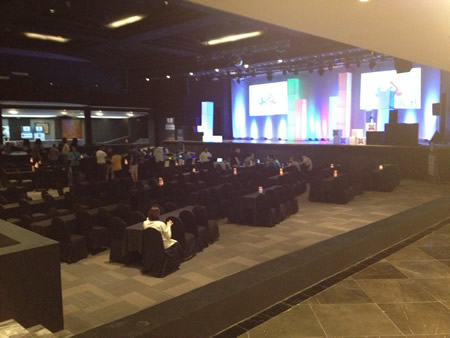
During keynotes, all the tables were filled to about 80% capacity, but the late evening bug squashing event pictured above, only had a much smaller number of coders attending. I am not an advanced Joomla programmer; I create modules and plugins when I need them, but I've never coded a component, but I aspire to become more proficient. I stopped by the bug squashing event long enough to get an introduction to the bug tracker application, and a bit more.
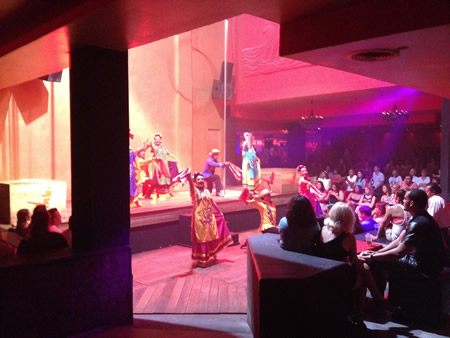
Right adjacent to the arena where all the keynotes and bug squashing were held was the hotel's nightclub that featured different events each evening. At around 11pm, I went with my wife to see some very good Mexican traditional dances performed, and a very accomplished and entertaining rope twirler.
Saturday, November 8
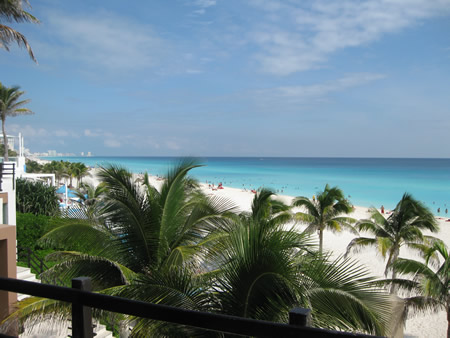
Each morning Peter Bui from Australia led yoga on the beach at 7am, followed by a dip in the ocean. Susan and I participated on Saturday and Monday mornings.
10:00 "Do Your Wireframes Suck? Come Make a Wireframe With Us!", by Britta Stender & Mathias Jensen
This is one of a couple of sessions that I thought would focus on one thing but turned out to focus on another, and yet I was very happy I attended, and I took away a valuable lesson. I thought this session would be a demonstration of how to wireframe using InDesign and possibly a wireframe application like Axure. Instead the session was entirely focused on working with your clients to get them involved with defining what the requirements and design of their website should be. Attendees broke up into groups of three people or so per table and used the Tactile Design Kit (www.tactiledesignkit.com) in an exercise. Using the kit we created personas who would be potential consumers of Joomla. Some teams, then thinking in terms of these different personas, compared what impressions Joomla.org would make vs. WordPress.org, while the others compared Joomla.org with Drupal.org and Drupal.com. The presenters discussed how they used the different features of the Tactile Design Kit to work with their clients.
Our presenters were from redCOMPONENT in Denmark, and it was nice to hear how their multinational team of over 40 people has members in Vietnam and elsewhere around the world.
14:45 "Joomla! in Action"
This was the toughest time period for me to pick between the multiple sessions running concurrently, but in the end I chose the one on the Joomla! Certification Program over the session on Joomla User Groups. One of the reasons I'd come to JWC14 was to speak with as many people as possible on how to build a successful local Joomla Users Group. By this time in the conference I'd already talked to and learned a lot on that topic, but I love to teach Joomla, and I had never even heard about a Joomla Certification Program before this weekend, and what better way could there be to get a jump-start on this? In the 1990s I took a lot of certification tests to maintain my Certified Novell Engineer (CNE) status and subsequently, Microsoft Certified Trainer, and then more exams to become a Microsoft Certified Solutions Expert (MCSE). I never finished this last one because my focus shifted to web design. So the concept of Joomla Certification definitely intrigued me.
Because of the non-disclosure agreement I signed, I really can't say much about the Joomla Certification. I will say that spending a half-hour answering some proposed test questions made me realize that even if I had yet to have had a use for Joomla's Multi-Language features, I really would be doing a disservice to others if I taught Joomla to a class and didn't teach this feature. It also led me to change my plans for the Sunday 11:30 slot to be the session on Internationalization with Joomla! 3. Also, I live in New York and can easily see opportunities to do an English/Spanish or English/Mandarin website.
Sunday, November 9
10:30 "Building Membership Sites with Joomla!", by Steve Burge
Steve Burge from OSTraining shared his hard-earned wisdom from over five years of offering training via website access on a subscription basis. I learned about the pitfalls of using PayPal or payment gateways like Authorize.net for recurring billing. These sites are not optimized for it, and surprisingly you don't own the data about your customers, they do. If you want to get your customer's data when you try to leave and change a service, you may have pay a lot of money for this. Using a service like recurly.com is a much better way to go. It might cost you 3% of your sales as opposed to 2%, but the services are worth it. Steve talked about the dunning services which are provided. Dunning is the process of communicating with your customers when something goes wrong with their credit card payments due to passing an expiration date, inactivation of a card because it's lost or it's security compromised, insufficient funds, etc. Letting a service do this for you is well worth it.
11:30 "Native Internationalization with Joomla! 3", by Ron van Schaik
As I said earlier, I've never used Joomla's multi-language features, before. This session featured a step-by-step demonstration of creating a website for multiple languages. There are a lot steps, but Joomla's multi-language features seem rather elegantly implemented. I also know that Jen Cramer's Joomla! 3 Essential Training course on lynda.com features 45 minutes of video devoted to. "Creating a Website with Multiple Languages". So learning and practicing how to do this is now on my agenda.
14:45 "Building Joomla's Issue Tracker", by Michael Babker
Michael presented an overview of the development of the issue tacker including the directory structure and some coding examples. I found it interesting, but developing software of this level of complexity is beyond me. I am very thankful that Michael and so many other coders work so hard so that we all can reap the benefits if their work.
15:45 "Speed up Joomla! Development Using the Component Creator", By Søren Beck Jensen
I'd used the free version on Component Creator six months ago to create a simple employee directory with just one table. For his presentation, Søren Beck asked the audience to define some sample application requirements. We concocted an attendee registration application. In half an hour, he had a fully functional portable, installable component and module to CRUD (create, read, update, and delete) attendees with their gender (radio buttons) and favorite ice cream flavor (dropdown) enterable in a form, and then shown in list and details views, on both the back-end and front-end of Joomla, with three related tables in the backend. I just took advantage of the 50% off attendees discount and purchased a 1-year Premium subscription. I can't wait to use this more.
The audience asked great questions. Søren demonstrated importing fields from existing tables and one attendee pointed out how useful this would be in replacing no-longer-supported old Joomla extensions when you need equivalent functionality migrating from Joomla 2.5. to 3.x.
Keynote Session: "We are Joomlers!", by Sander Potjer
At the closing Keynote session, Sander talked about what Joomla Developers call themselves and suggested "Joomlers" was the best designation to standardize on. He also introduced the Joomla Volunteer Portal.
Sander Potjer informed us that Joomla postcards, created by Chaira Aliotta, were available on the tables as we leave and that we should use them to send a thank you card to people we know who are helping the Joomla cause.
A local representative speaking in Spanish (which I only partially understood) profusely thanked the event organizers for holding this conference in Mexico, for having a complete track in Spanish, and for having improvised a full day of Joomla training for students from a nearby college. One of the most emotionally moving parts of the weekend was his presentation of a large Mexican flag as a token of gratitude to Dianne Henning who was on the Joomla! World Conference organizing team.
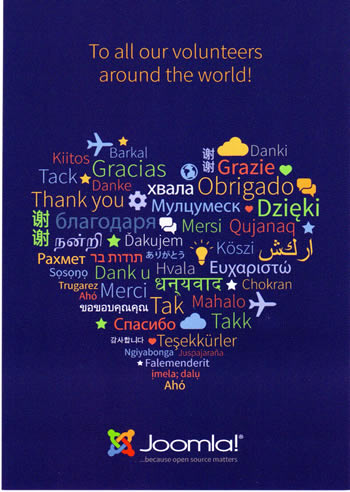
It was announced that the Joomla! World Conference 2015 would be in India. I think that's too far for me, but JWC14 was hands down the best Joomla experience I ever had, and I am seriously considering J and Beyond May 29-31, 2015 in Prague.
Monday, November 10
Yoga on the beach, followed by swimming, breakfast, and the trip home.
Some miscellaneous trip observations
I didn't recognize anyone at the conference from the New York area, and it made me feel good that the Joomla Community is so big that over 200 people show up for a conference from elsewhere; and that I am one of the benefactors of so many people being interested in Joomla.
The JWC organizing team did an amazing job. The sessions and keynotes were excellent. It's a simple thing, but all the handouts, and signage for the meeting rooms were very attractive and printed with full bleeds. It had me thinking they were so meticulous they probably had picked the date to co-inside with the full moon to light the Saturday night barbecue.
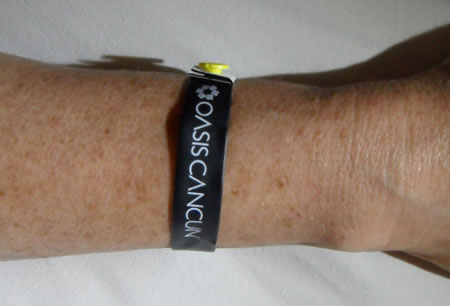
The Grand Oasis Hotel was a great pick. The WiFi was slow and only available in selective areas, but other than that, the hotel was great. When you checked in, they put a wrist band on you indicating the all-inclusive top service category. We got to choose from 16 different restaurants; the food was very good, and the drinks were free and unlimited. The most unusual thing of the entire trip was the demeanor of the hotel staff. To me, everyone of them seemed to be happy. The hotel must have an amazing human resources department that hires only people who tend to be happy, and then keeps their employees happy. I thought what a contrast this was to many of the clients I work for in busy, stressful New York City. I love Joomla!
By accepting you will be accessing a service provided by a third-party external to https://magazine.joomla.org/
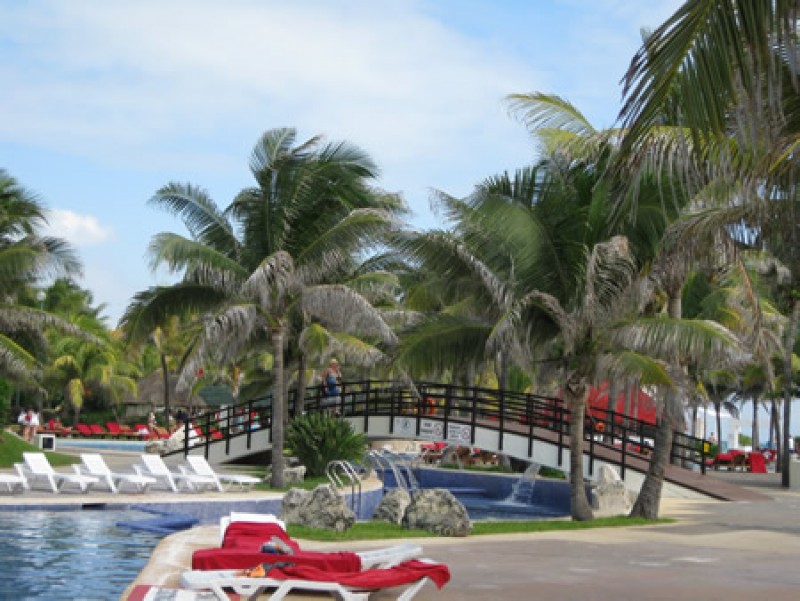
Comments